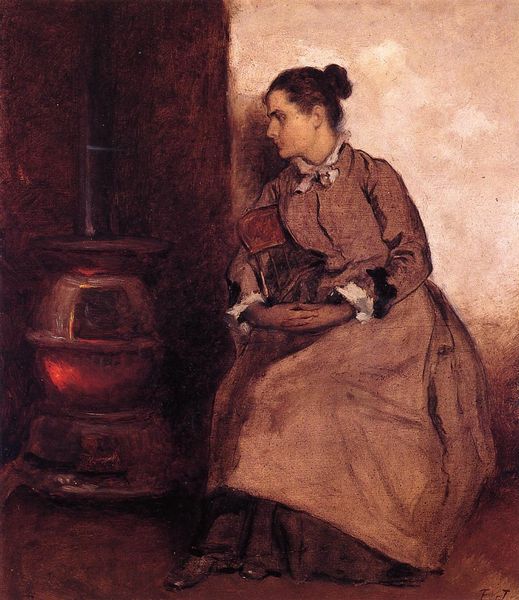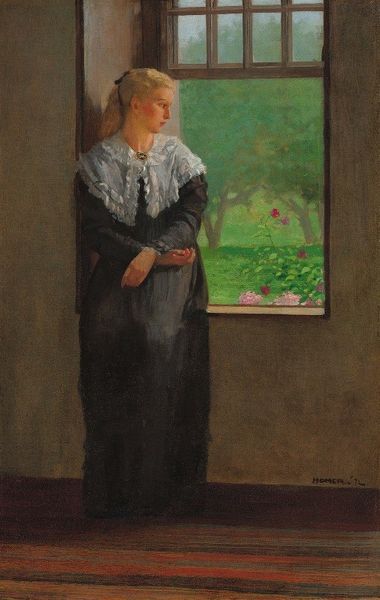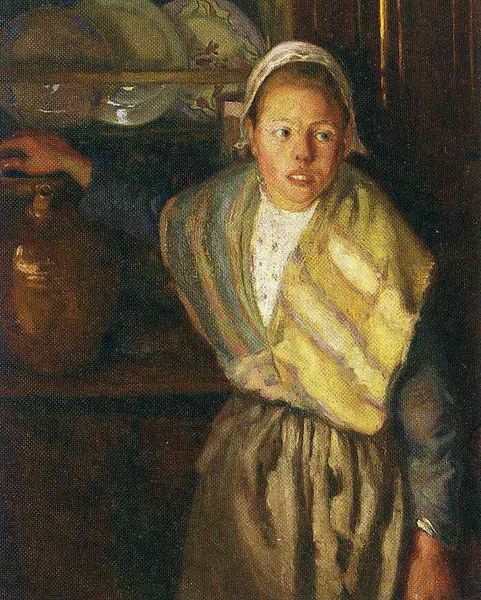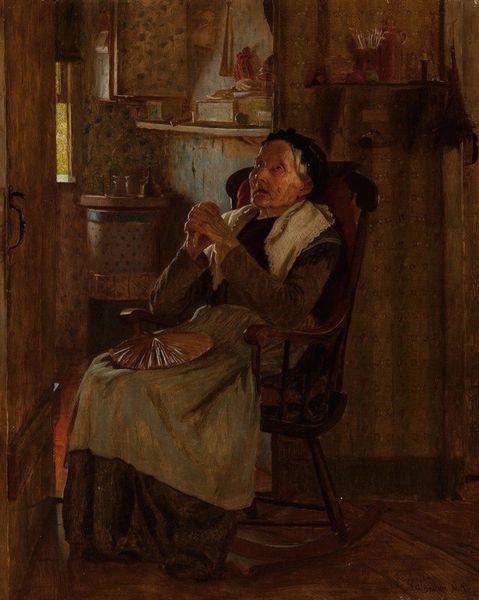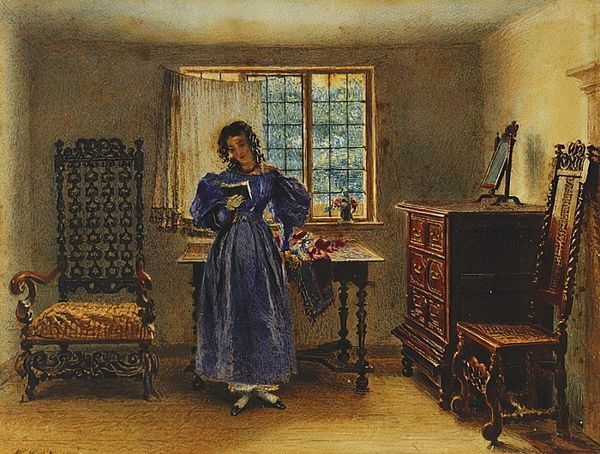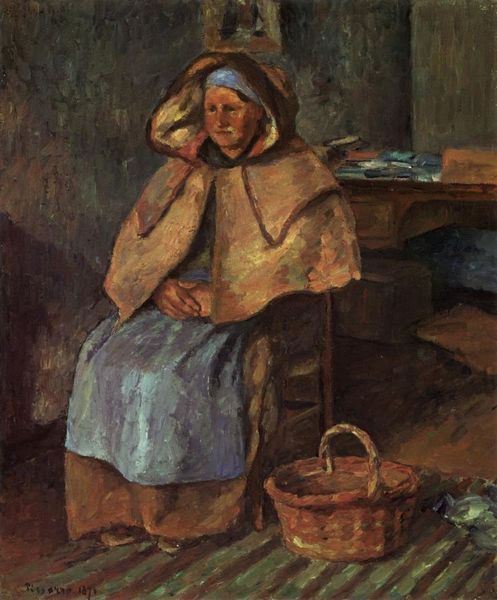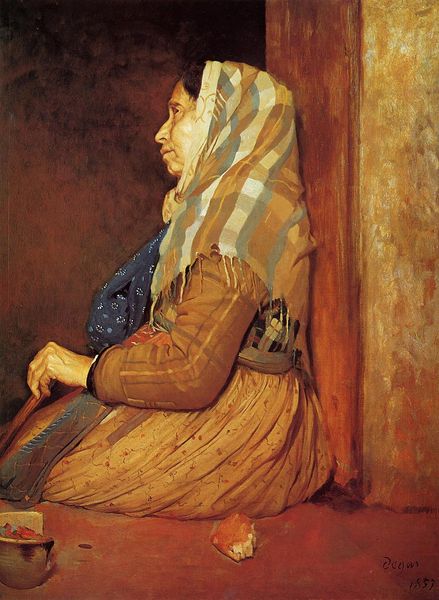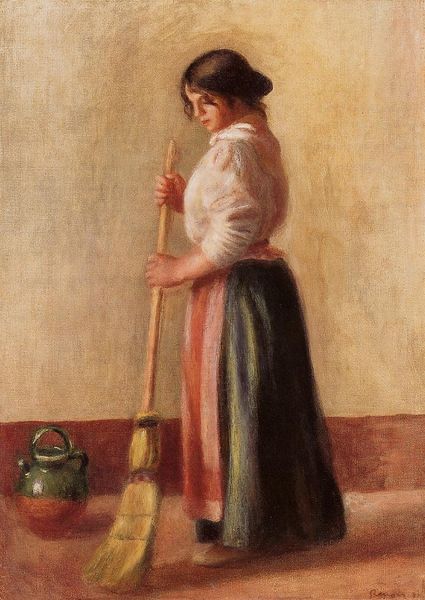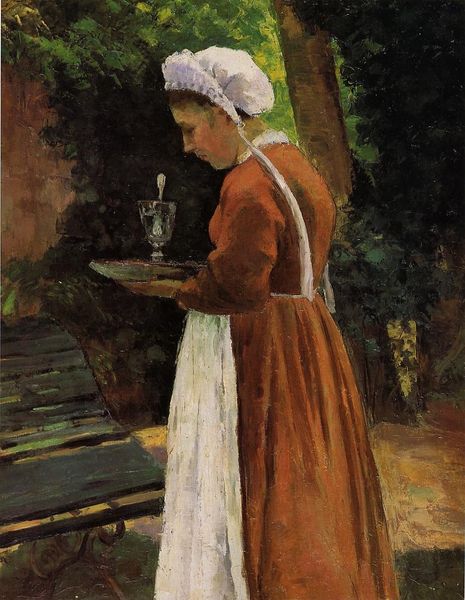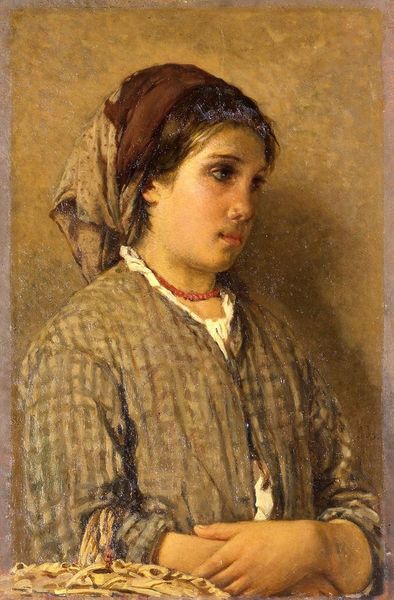
painting, oil-paint
#
portrait
#
painting
#
impressionism
#
oil-paint
#
oil painting
#
genre-painting
#
portrait art
#
realism
Copyright: Public domain
Curator: This is Eastman Johnson's "A Day Dream," created in 1877. He captured it using oil paint on canvas, creating a piece that blurs the lines between portraiture and genre painting. Editor: It's wonderfully subdued. I'm immediately drawn to her pensive gaze out the window, and the way the light catches the windowpane really sets a melancholic tone. The scale of the figure feels imposing too; she nearly fills the frame. Curator: Absolutely. Let's think about the context: Eastman Johnson was working during a period of intense social change in America. What strikes me is this tension within the image – her apparent idleness perhaps standing in contrast to the era's heightened expectations and reform efforts. Is she limited by societal constraints? Is her interior life as a woman being revealed to us? Editor: An interesting question about constraint and the depiction of women in this period. From a historical perspective, Eastman Johnson often focused on portraying everyday American life, showing diverse socio-economic classes. With "A Day Dream", the fact that it exists as an artistic object reflects patronage structures of the time – who could afford art, who was considered worthy of depiction? The scene might be simple, but the undercurrents of class are ever-present. Curator: And to expand, we could discuss the domestic sphere during that period, exploring gendered expectations, race, and the economic constraints women of different backgrounds would have experienced. How can her ‘daydream’ be examined with ideas about women’s representation? Does the fact that the viewer is situated within the domestic space add to feelings of confinement? The table laden with textiles might be considered another form of domestic work as well as creative possibility. Editor: Yes, thinking about how gender shapes space. As you mention, Eastman Johnson frequently played with these ideas. His focus on quiet, intimate scenes challenged accepted academic painting's grandiose scale. His commitment to chronicling American life meant addressing societal structures. I also note how the starkness of the window, the subtle use of light and shadow to define the woman’s face invites you, the viewer, into that private moment, as well as into more complicated narratives around womanhood at the time. Curator: "A Day Dream" is an artwork ripe with possibilities for analyzing intersectional topics surrounding gender and artistic interpretation. It compels us to consider the narratives we bring to historical objects, interrogating history’s legacy with considerations for contemporary discourse. Editor: Eastman Johnson’s piece creates an opening for that type of consideration. Hopefully it pushes the audience to question some accepted beliefs while reflecting on art history's development as an ongoing critical, political discussion.
Comments
No comments
Be the first to comment and join the conversation on the ultimate creative platform.

